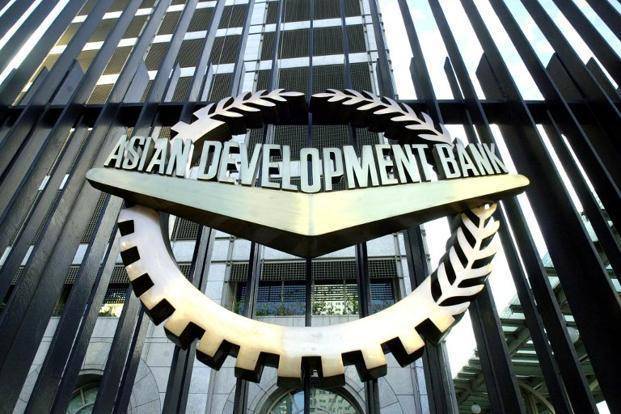ISLAMABAD - The Asian Development Bank (ADB) has painted bleak picture of Pakistan’s economy as inflation will increase, GDP growth will decline and budget and current account deficits will widen during current fiscal year (FY19).
The ADB has noted Pakistan’s GDP growth at 4.8 percent in FY2019, down by one percent from last year. Similarly, water shortages in some areas are likely to restrain agricultural production. Growth in manufacturing and services will likely be affected by fiscal and monetary tightening.
The Bank has also hinted for power tariff increase. “The new government has to undertake tariff reforms to contain rapidly rising and potentially disruptive intercompany arrears in the energy sector—so called “circular debt” that exceeds Rs1.4 trillion, or 5% of GDP,” ADB noted in its Asian Development Outlook (ADO) Update 2018. Gas prices were already raised by as much as 143 percent in September.
The inflation is also projected to surge to 6.5 percent in FY2019 because of currency depreciation and elevated international oil prices. Inflation accelerated sharply for both food and other purchases in the first two months (July and August) of FY2019, to 5.8 percent from 3.2 percent a year earlier. The central bank had enhanced the policy rate by 100 basis points to reach to 7.50 percent in July 2018 in an effort to contain inflation. It is likely to raise the rate further as part of its monetary tightening.
The ADB has emphasized the newly elected government to urgently address the large budget and current account deficits, rising debt obligations, and falling foreign exchange reserves. This requires mobilizing substantial external financing to buy time for orderly reform to reduce the large external and domestic imbalances. Such resources may be acquired from bilateral and multilateral sources, the diaspora, and international capital markets. The key challenges are to adopt the right reforms and achieve good outcomes to sustain public support.
The report stated that federal government budget for FY2019, written by the outgoing government and administered by it until the new government took office in August 2018, set a deficit target equal to 4.9 percent of GDP, much lower than the FY2018 outturn of 6.6 percent of GDP. Revenue was targeted at 16.3 percent of GDP, including a 17.7 percent increase in tax collection to be achieved mainly by improving tax administration. However, the budget reduced tax rates without any rationalization on the expenditure side. Expenditure was set at 21.2 percent of GDP. The budget called for 82 percent of deficit financing to come from domestic sources.
For FY2019, the new government presented supplementary budget proposals for parliamentary approval with the objectives of reducing development expenditure, introducing regulatory duties on selected luxury items to generate additional revenue, and reversing earlier tax cuts, while also withdrawing the petroleum development levy to ease the burden on the general public. The focus over the medium term must be to further enhance the revenue base to enable durable expansion in funding for social welfare and infrastructure that is necessary to lift growth.
The current account deficit is now expected to moderate from the equivalent of 5.8% GDP in FY2018 to 5.0% in FY2019 but exceed the ADO 2018 projection of 4.5%. Exports are likely to continue to expand with the benefit of currency depreciation, fiscal incentives, and improved electricity supply and connectivity. However, slower growth in some advanced economies poses a risk to the forecast, as do rising trade tension and protectionism. Growth in import demand will be contained by some scaling back of budgeted expenditure, additional import duties and taxes under discussion in the government, tighter monetary policy, and a freer exchange rate.
The current account balance will benefit as well from more stable prices for oil and other imported commodities. Import growth already slowed in the first 2 months of FY2019. Worker remittances will continue to cushion the current account, but any significant increase will depend on more effort to tap diaspora resources.
According to ADB, Pakistan’s growth sustainability will depend on how effectively the government manages the fiscal and current account deficits, and on its consistent implementation of policy to arrest the widening of imbalances and preserve macroeconomic stability. Recent actions to tighten monetary policy and allow exchange rate flexibility are costly but necessary. Further monetary tightening, stronger fiscal discipline, and decisive efforts to contain losses incurred by public sector enterprises would help address external imbalances and fiscal risks. Moreover, macroeconomic resilience and higher growth that is more sustainable and inclusive critically depends on vigilance in assuring that new external liabilities are phased in responsibly, the resumption of fiscal consolidation over the medium term, and accelerated reform to enhance the tax base, address distortionary tax incentives, and resolve the structural issues that undermine export competitiveness.
“Pakistan’s economy has time and again shown resilience and the capacity to bounce back. Although formidable development challenges remain, we expect the stability fostered by the smooth political transition and the new government’s strong commitment to focus on pockets of vulnerabilities and implement pro-job and socioeconomic development policies that will stimulate robust, sustainable growth in the years ahead,” said ADB Country Director for Pakistan Ms Xiaohong Yang. “ADB will work closely with the government and the private sector to improve Pakistan’s basic public services, infrastructure, food and energy security, and attract investment and trade to create jobs and improve the quality of life of the country’s citizens.”
“The new government needs to move swiftly to put in place its macroeconomic policies including fiscal, monetary, tax, and trade reform policies to promote financial stability and growth. Pakistan needs to institute mechanisms to increase competitiveness, attract private sector investments, and strengthen the ease of doing business as well as Pakistan’s position in the global value chain,” said Ms Yang.






